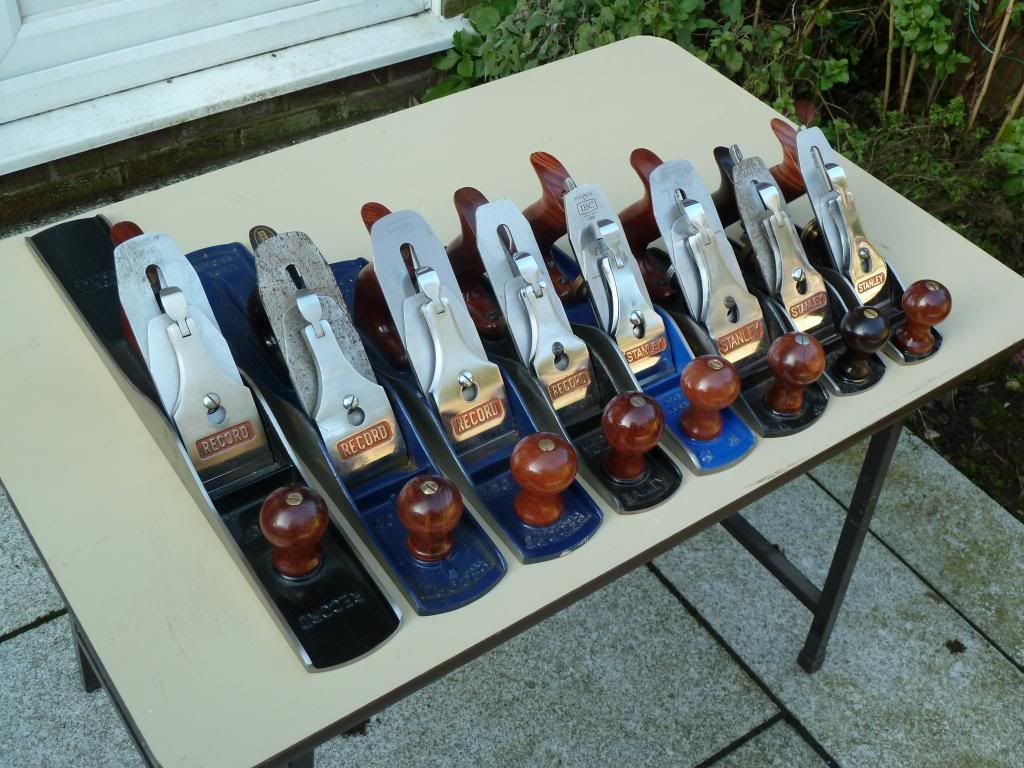Seasoned oak is a fair old test for a Bailey-type plane with a standard thin iron!
I think Mignal is right - sharpness cures many (not all!) problems. Investing in a 1200 grit diamond stone (as your other sharpening equipment is diamond stones it makes sense to stay consistent, though there's no real harm in mixing sharpening media if you choose or if circumstances dictate) may prove a very sound long-term investment; it'll give edges more suited to fine finishing work with a smoothing plane, with the added benefit of more refined edges on such things as chisels used for paring and joint-fitting. (Arguably, plane irons for rough bulk stock removal, and chisels for heavy chopping, will be OK off the 600 grit stone - in those applications, the first few strokes or chops will take off the very fine edge from a polishing stone.) The finer stone will help with finishing softer woods, too - where you now have a smooth surface, you'll have a lustrous one from a truly sharp iron!
So for final smoothing duties, sharpen on the 600 grit and finish on a polishing stone, then set the cap-iron as close to the edge as you can get it - literally a hair's breadth, 0.2mm or so - and set the plane's mouth very tight by moving the frog forward. Then set the plane for a very fine shaving, and see how you go. That may be enough to cure the chatter problems, and avoid most tearout problems too. Skewing the plane so that the blade attacks the work at 45 degrees can help a bit, too; as can turning the plane end-for-end and using it on the pull to deal with reverse grain patches. Any remaining minor tearout could be dealt with by either a scraper or by sanding.
If it isn't good enough, then it may be worthwhile to stiffen up the setup with either a better cap-iron, or a thicker iron, or both. If THAT'S not enough, try a back-bevel on the iron. (If that doesn't work - either scrap the wood and get some nicer stuff, or take up stamp collecting instead!)
Strangely, perhaps - given that they are set to take the thinnest shavings - it's usually smoothing planes that need the most nursing to give fine results, maybe because flaws in the finish that don't matter much from a try plane, and don't matter at all from a jack plane, are critical. If you can get a smoother set up to give chatter and tearout free results in wild-grained hardwoods, you've pretty much cracked one of the trickiest skills of hand planing.
A try plane would be set up similarly to a smoother, but with a slightly wider mouth and cap-iron set slightly further back (say 0.4 to 0.5mm), reflecting the thicker shaving expected of a stock dimensioning plane, and giving a reasonable (but not necessarily flawless) finish. My Record 07 did perform much better once I'd fitted it with a Clifton iron and stay-set cap-iron, so those may well be worthwhile longer term additions for your try plane. Try with the existing iron and cap-iron first, though.
The jack plane, being for bulk stock removal (working across grain whenever possible) is an entirely different setup - cambered blade, wide mouth, cap-iron set back 1.5mm or so, deep cuts. In this instance, finish is pretty well immaterial, so the existing iron should perform adequately.
The fine edge honed on a decent plane iron lasts about 20 to 30 minutes on pine, and maybe 10 to 15 minutes on something like oak. It's worth getting used to a quick-and-easy sharpening regime that can refresh an edge in a minute or two, so that you're not tempted to carry on working with a steadily dulling iron.
The reference to 'super-smoother' is reflecting some people's practice of dimensioning their stock by machine, and only using handplanes to refine the surface, adjust edge joints to fit, and take out any machine marks. Some people use a larger plane set up like a smoother to do that ('super-smoother' thus reflecting plane size rather than quality of finish produced), some prefer the smaller size, lightness and nimbleness of the smaller planes for finishing, and a try plane for edge-jointing. It's entirely down to personal preferences and individual circumstances.





